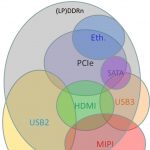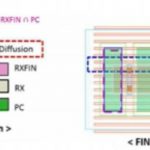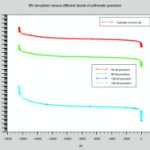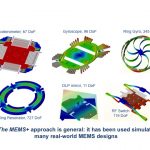You are currently viewing SemiWiki as a guest which gives you limited access to the site. To view blog comments and experience other SemiWiki features you must be a registered member. Registration is fast, simple, and absolutely free so please,
join our community today!
WP_Term Object
(
[term_id] => 157
[name] => EDA
[slug] => eda
[term_group] => 0
[term_taxonomy_id] => 157
[taxonomy] => category
[description] => Electronic Design Automation
[parent] => 0
[count] => 4360
[filter] => raw
[cat_ID] => 157
[category_count] => 4360
[category_description] => Electronic Design Automation
[cat_name] => EDA
[category_nicename] => eda
[category_parent] => 0
[is_post] =>
)
Whoever has said that history never repeats itself should read this recent PR from AMD! The news can be summarized in three points:
- Multi-year agreement gives AMD access to a range of Synopsys design IP including interface, memory compiler, logic library and analog IP for advanced FinFET process nodes
- Synopsys acquires rights
…
Read More
The first consumer products with 20nm processing are arriving in 2014 like the 2 billion transistor A8 chip in the iPhone 6, however at the 14nm node there are new designs underway to continue the trend of Moore’s Law. To get a better feel for the challenges of designing with 14nm FinFET technology I watched a 23 minute video … Read More
When we get the notion of expansion of a company, it always provides a positive picture about something good happening to boost that expansion. There can be several reasons for expansion such as merger & acquisition, formation of joint venture or partnership, large customer orders and so on. However, organic expansion which… Read More
Semiconductor companies continue to use the traditional corner-based signoff approach that has been developed more than 40+ years ago and has since remained mainly unchanged as an industry paradigm. Initially it had 2 corners, namely Worst Case (WC) and Best Case (BC) with the maximum and minimum cell delay respectively. Note… Read More
TCAD to SPICEby admin on 09-21-2014 at 7:00 amCategories: EDA
Power devices have historically been made from silicon (Si), which has reached the limit of electric power loss reduction. With the superior physical and electrical properties of silicon carbide (SiC), we can expect to see a significant expansion in the amount of electric power conversion of electrical equipment as well as reduced… Read More
One of the things about MEMS devices is that they almost always live on a chip that also contains the electronics necessary to process the output from the sensor. For example, an on-chip accelerometer for a car airbag deployment will contain the electronics necessary to process the signal from the sensor and end up with something… Read More
With the advent of HLS tools, general notion which comes to mind is that okay, there’s an automated tool which can optimize your design description written in C++/SystemC and provide you a perfect RTL. In real life, it’s not so, any design description needs hardware designer’s expertise to adopt right algorithm and architecture… Read More
As the SoC design size, complexity and functionality keeps on increasing with multiple IPs packed together and design time and time-to-market keeps on decreasing amid critical constraints on PPA, there is no other alternative than to do the design first-time-right not to miss the window of opportunity. And that could be possible… Read More
Even though the flight to Taiwan is somewhat difficult, I really do enjoy my trips to Hsinchu. In addition to the top two pure-play foundries being there, one of the top SoC companies (MediaTek) and many of the leading semiconductor design companies are there as well. All are a quick taxi ride from my home away from home, the Hotel Royal.… Read More
Spice view of a design, block or fragment of the design is probably the lowest level of functional description of a circuit in terms of transistors, resistors, capacitors, interconnect and so on, which in several ways acts as an ultimate proof of pudding for any semiconductor design before manufacturing. However, it’s generally… Read More








Quantum Computing Technologies and Challenges